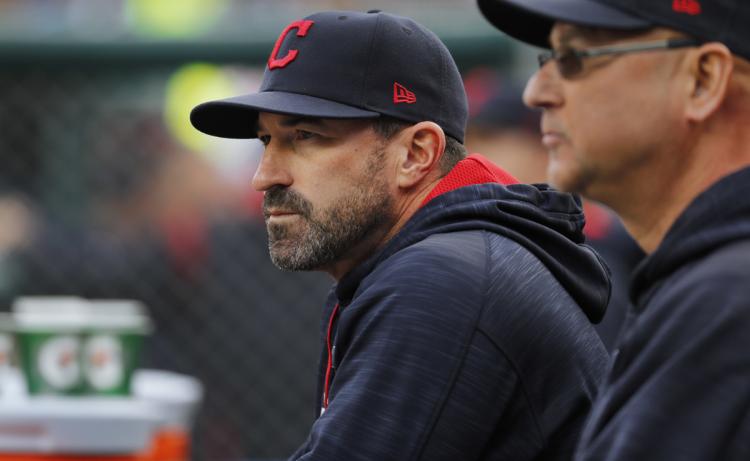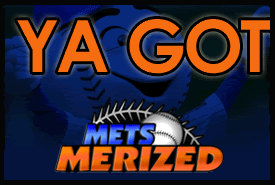
When the New York Mets started their managerial search earlier this month Mickey Callaway was an obscure name to fans and an extreme long shot.
First there was the pursuit of Houston Astros bench coach Alex Cora who seemed like a possible favorite before the Boston Red Sox job opened up.
Then multiple reports that current Mets hitting coach Kevin Long had become the new favorite to land the manager gig.
Even former Mets third base coach Manny Acta had thrown his hat into the mix with a strong interview.
Enter Micky Callaway, the 21st manager in Mets history. The only managerial experience for the 42-year-old Callaway came as the interim Head Coach of Texas A&M International University in 2008.
The former big league pitcher of six seasons was named the pitching coach of the Lake County Captains in 2010 to begin his journey in the Cleveland Indians organization.
Lake County won the league championship, led the league in WHIP and third in ERA. The next year Callaway moved up a level to be the pitching coach for the Advanced-A Kinston Indians of the Midwest League in 2011.
Kinston would lose in the finals and lose Callaway. The Indians would name Callaway the minor league pitching coordinator for the 2012 season.
Then the following year, after only three years in the organization, Callaway was named the pitching coach of the Indians for the 2013 season.

Cleveland had one of the worst pitching staffs in baseball in 2012 posting a 4.79 ERA and 1.42 WHIP. That changed drastically in Callaway’s first season as they lowered their ERA to 3.82 and WHIP down to 1.33.
The big reasons for the change from 2012 to 2013 was improvement from existing pitchers in Ubaldo Jimenez (5.40 ERA in 2012 to 3.30 in 2013), Justin Masterson (4.93 to 3.43), Corey Kluber (5.14 to 3.85) and Zach McAllister (4.24 to 3.75).
Positive results continued to come for the Indians pitching staff that would have the best ERA in the American League under Callaway from 2013-2017. Their FIP during that span was 3.60 (1st in AL, 3rd in MLB) and they struck out a major league leading 9.02 per nine innings.
What was Callaway’s trick?
“He doesn’t think he’s got all the answers,” said Corey Kluber, a top American League pitcher. “Whether it be a scout or front office, analytical guy, he’s open to anything and everything.”
The Indians staff also set major league records this season in strikeouts (1614), strikeout rate (10.08 K/9) and fWAR (31.7, beating 1996 Braves).
Callaway learned to throw a curveball at 11-years old and he’s now trying to implement that pitch to great success so far in the major leagues.
The Indians led major league baseball this season throwing a curveball 17.6% of the time, a fair amount over the second place Los Angeles Dodgers at 14.9%. Cutter was a prevalent pitch in the organization as well with the Indians throwing it a league leading 12.9%.
Indians weren’t just throwing more curveballs, they were being more effective with them than any other team in baseball according to FanGraphs. The pitch value over 2016-2017 for the Indians as a staff with their curve was 96.3, which blew away the Astros who were second at 38.1.
“As a staff, we had meetings about it,” Indians starter Josh Tomlin said in June. “It doesn’t hurt to throw your best pitch more. Even if it’s your curveball, throw it more than anything else. I love throwing my cutter and I love throwing fastballs, but if my curveball is the best chance of being successful, then throw it.”
Of course the Mets biggest downfall during the 2017 season was the injuries and ineffectiveness from their starting rotation that posted a 5.14 ERA, the worst in team history.
The Mets saw a clear need in bringing in a new manager that specialized in pitching and weren’t afraid to go outside their comfort zone to bring in who they felt was the best fit.
Callaway has very little managing experience, has no Mets connections and GM Sandy Alderson hadn’t met him until his interview. That didn’t stop the former high school basketball star from impressing Mets brass in the interview with his passion, communication skills and need to have a strong relationship with his players.

“On the one hand, people are reluctant to name pitching coaches as manager,” Mets GM Sandy Alderson said during the introductory press conference. “On the other hand, in our situation, short-term, pitching is everything.”
For the last five seasons, Callaway worked under the tutelage of manager Terry Francona who is considered by some as the best manager in baseball.
Francona had this to say bout Callaway to MLB reporter Jordan Bastian, “The first thing that I noticed when the season started our first year was his level of confidence. It seemed to me that it exceeded his experience.”
“Then, as you watch him and you’re with him every day, you see that that confidence allowed him to have other voices, and get input from other people, and sift through that and take what he wanted. But my goodness, he had such an impact on the pitching staff.”
GM Sandy Alderson was also given the inside scoop on Callaway by Terry Francona’s son Nick that worked in the Mets minor league system this past season.
Once the Red Sox hired Cora to be their manager, Mets fans started getting nervous that the front office would hire a what they called a ”retread” or someone that wasn’t ”new blood.”
Instead, Alderson and the Mets front office brought in one of the most sought-after manager candidates in baseball while simultaneously energizing a fan base that had little to cheer for in 2017.
Now does all of this add up to a can’t miss manager who is going to save the Mets in 2018? Of course not. Callaway appears to have the focus, the communication skills, and a deep understanding of all the modern influences and nuances of developing and refining a pitching staff.
But what has me excited for our new Mets skipper was how deeply immersed he has already become in the team’s culture and its rich history. During his press conference I saw a leader who would not be held back by the dogmas of outdated baseball thinking and was ready to embrace new ideas and theologies that have become so integral to succeeding in this new age of baseball.
Throw in his incredible charm and charisma, his boundless enthusiasm and thirst to succeed, and you have all the potential for the makings of the next great manager in Mets franchise history. Now all he needs to do is go out there and execute.














